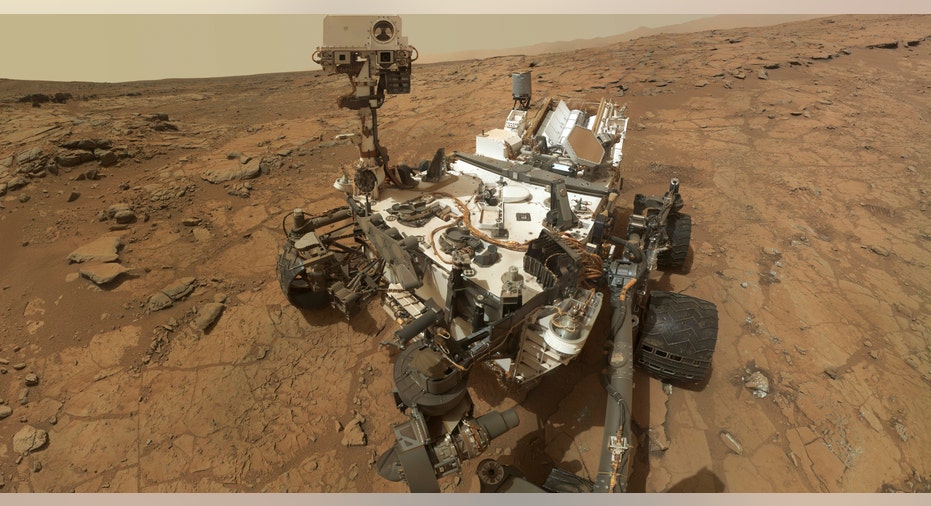NASA Giving $9.8M to SMBs for Trip to Mars

U.S. small businesses may be headed to Mars – literally.
Last week, NASA announced the 14 winning proposals from U.S. small businesses and teams at research institutions for contracts totaling $9.8 million. The U.S. space agency says the funding will allow the small business recipients to continue working on innovative, high-tech projects needed for future space missions.
The program is called Small Business Technology Transfer (STTR) – named for the way small businesses facilitate the transfer of ideas from research institutions and universities and turn them into viable technologies.
“What we hope to see is ideas at the cutting edge at the lab pulled out more rapidly, thanks to a project associated with government needs,” says Rich Leshner, program executive for the SBIR/STTR Program at NASA.
Leshner says STTR and its sister program, the Small Business Innovation Research (SBIR) program, which funds small business research and development, “benefits NASA in terms of the level of innovation and creativity that small businesses bring to the table.”
NASA 2013 Picks for Innovation Funding
HJ Sciences and TechnologyFunding: $700,000 contract pending
“It’s basically a lab on a robot platform,” says HJ Sciences and Technology CEO Hong Jiao, who works with a team at the University of Texas.
The technology Jiao is referring to will allow a microchip on a robot to quickly process samples on Mars – as if it were in an actual lab. This would help scientists figure out whether there is organic matter on Mars, indicating there may have been life on the planet.
“Right now, we don’t do very sophisticated chemistry up there. We’re essentially using the same technology from the first time NASA sent anything to Mars in the 1970s,” says Jiao.
At the end of the NASA-backed two-year, $700,000 contract, HJ Sciences and Technology says it will deliver a fully functional robot and microchip, which the company says it would try to commercialize later for applications on earth.
Neurala Funding: $700,000 contract pending
“NASA is interested in autonomy,” says Neurala CEO Max Versace. “What they want from robots is the ability to give high-level commands or instructions, like go and explore this area or find a rock with this chemical signature.”
Versace compares current robot technology to trying to stream a live video on a modem connection; there are many delays in terms of robot communication.
“Our core strength is building intelligent software,” says Versace, which in theory can enable robots to better explore planetary surfaces.
Neurala’s 10-person team is working with Boston University; the NASA contract they are negotiating is for $700,000.
Exquadrum Funding: Contract between $500,000 and $700,000 pending
Exquadrum COO Eric Schmidt says the small, Victorville, CA-based company is working on a cost-effective way to launch small research vehicles into space.
These micro and nano satellites are great for collecting intelligence, says Schmidt, for everything from military operations to weather surveillance.
Schmidt also says the technology will enable universities to launch many of the nano satellites that they’ve built that are just “sitting on the shelf, waiting to hitch a ride into orbit.”
Exquadrum is partnered with the University of Alabama in Huntsville.
VectorNav Funding: $700,000 contract pending
“We specialize in small accelerometers and gyroscopes – like the sensors in your cell phone that decide the orientation of your phone,” says VectorNav’s Director of Engineering Jeremy Davis.
The “smart sensing application” that VectorNav is working on for NASA would help the agency with active debris removal. “There’s essentially all this space junk orbiting the earth, from nuts and bolts from satellites to spent rocket boosters,” says Davis.
While this may not seem like a big deal, the junk can interfere with active satellites and space aviation.
“We’re developing technologies needed to autonomously grab derelict space craft and spent rocket boosters, and either haul it back to the atmosphere or push it into another orbit that’s not a risk,” says Davis.
VectorNav is working in collaboration with the LASR Lab at Texas A&M University.
“I imagine that leveraging small business’ creativity and various skill sets would provide more innovative and better solutions than insourcing it at NASA,” says Davis.